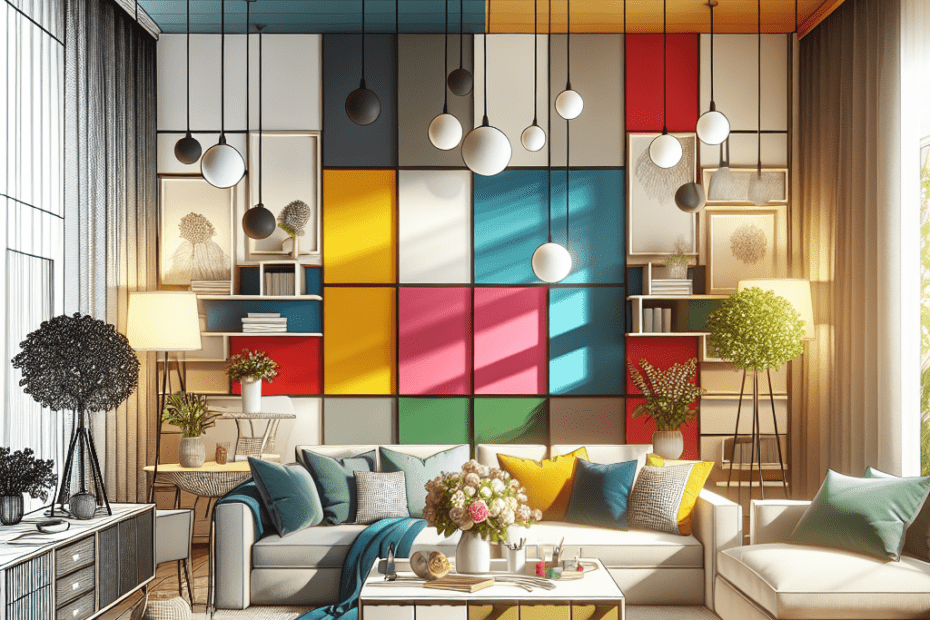“`html
The Role of Color Blocking in Creating Visual Interest
In the world of design, whether it’s fashion, graphic design, or interior decoration, they often turn to color blocking to capture attention and create visual appeal. Color blocking for visual interest involves pairing contrasting colors in a bold way to make elements stand out. This technique not only enhances aesthetic appeal but also guides the observer’s eye towards important features.
Understanding Color Blocking
Color blocking involves the use of contrasting colors placed next to each other in large sections, known as “blocks.” When executed correctly, this tactic accentuates design elements, induces emotional responses, and supports brand recognition. They see examples of color blocking in everything from website designs to urban landscapes.
| Color Combination | Emotional Response | Common Use |
|---|---|---|
| Red & Yellow | Excitement and Energy | Fast Food Branding |
| Blue & White | Calm and Cleanliness | Healthcare & Corporations |
| Green & Brown | Nature and Earthiness | Eco-friendly Campaigns |
Why Designers Use Color Blocking
Designers favor color blocking for several reasons. A prominent factor is its ability to create attention-grabbing visuals. For instance, a study by the Institute for Color Research found that people make a subconscious judgment about a product, environment, or person within 90 seconds of initial viewing, based largely on color alone (source: CCICOLOR Institute for Color Research).
Additionally, color blocking aids in the organization of information. When applied to web design, it helps structure content effectively. By using different color blocks, designers can indicate where certain types of information can be found, thereby enhancing user experience.
Color Blocking for Branding
Branding is another area where color blocking plays an influential role. Organizations employ contrasting color combinations to forge memorable brand identities. Moreover, according to a study by Colorcom, color increases brand recognition by up to 80% (source: Colorcom Study). By incorporating vibrant blocks of contrasting colors, companies can create distinct and memorable visuals that resonate with their audience.
Trends and Applications Across Industries
Across different industries, color blocking shifts trends. In fashion, they observe cycles of unapologetically vibrant color combinations followed by more subdued palettes. Interior designs incorporate blocks of color to differentiate functional areas within open-plan spaces.
In marketing, color blocking is leveraged in advertising to ensure that specific messages leave a lasting impact on viewers. Websites employ it to create a contrast that makes calls to action more effective and prominent.
Effectiveness of Color Blocking
The effectiveness of color blocking in creating visual interest is often quantified through engagement metrics. According to a survey by Hubspot, emails with colored calls-to-action buttons increased click-through rates by 21% (source: HubSpot Study). Such data underscores how incorporating vibrant color blocks can significantly influence engagement.
Key Takeaways
- Color blocking uses contrasting colors to create visual interest.
- This technique is key in guiding viewer focus and enhancing brand identity.
- Color blocking significantly improves user engagement in digital content.
- It is applicable across industries including fashion, interior design, and marketing.
- Statistics show the strong influence of color on consumer perception and behavior.
FAQs About Color Blocking for Visual Interest
- What is color blocking?
Color blocking involves using contrasting colors placed next to each other in large blocks to create attention-grabbing visuals. - Why is color blocking effective?
It is effective because it enhances aesthetic appeal, influences emotional responses, and greatly improves brand recognition. - Where can color blocking be used?
It can be applied in various fields including fashion, graphic design, interior decor, marketing, and web design. - How does color blocking affect consumer behavior?
Studies show that color can increase brand recognition and influence purchasing decisions, making it a powerful tool in marketing. - Are there any cultural considerations with color blocking?
Yes, color meanings can vary significantly across different cultures, so it’s important to consider these when designing for a global audience.
“`
